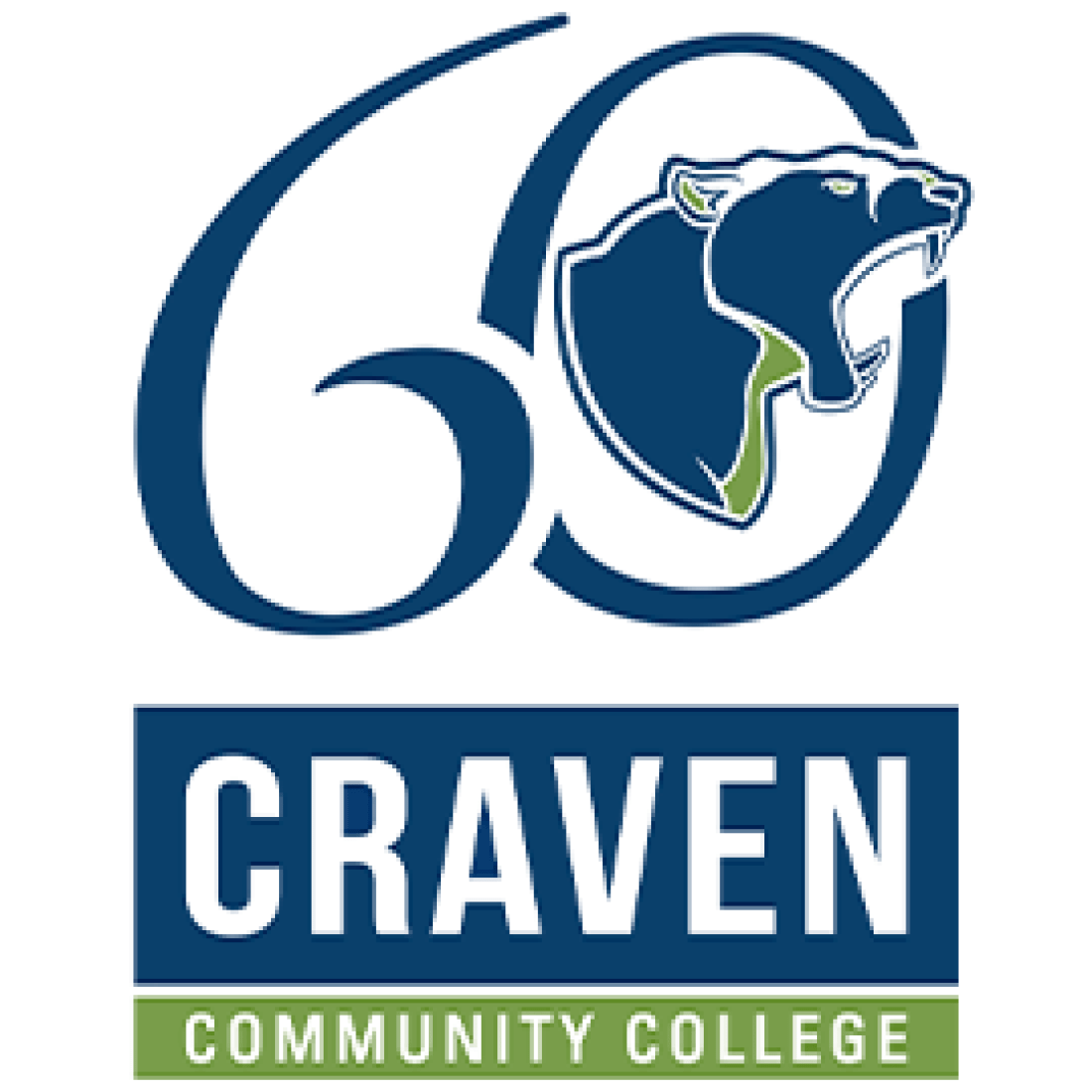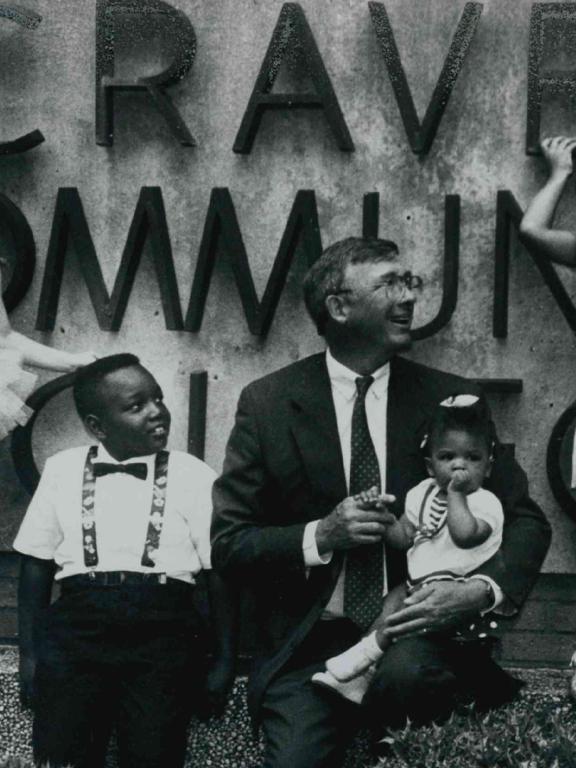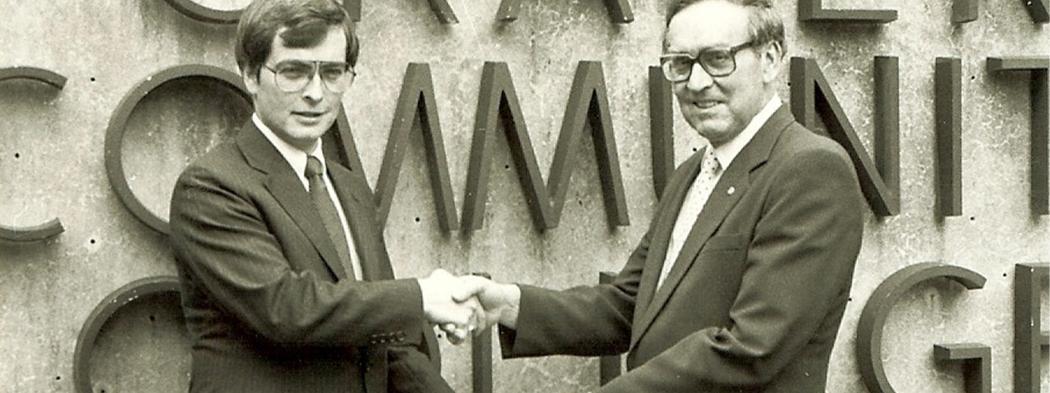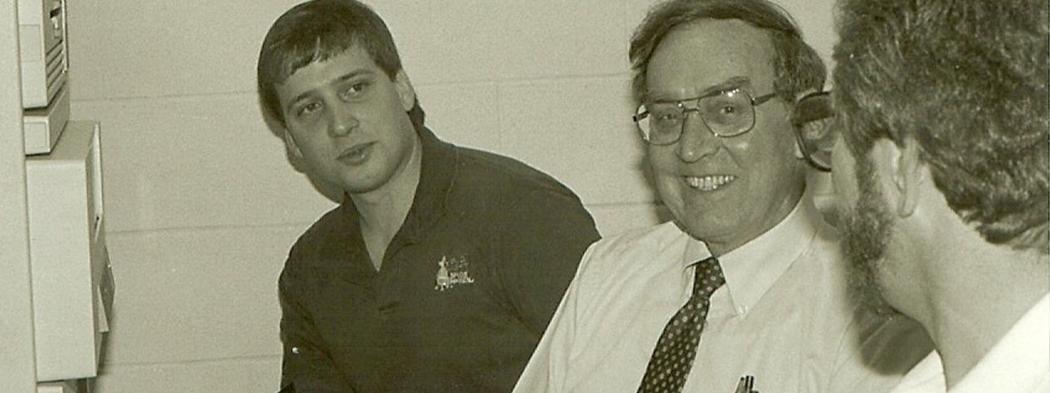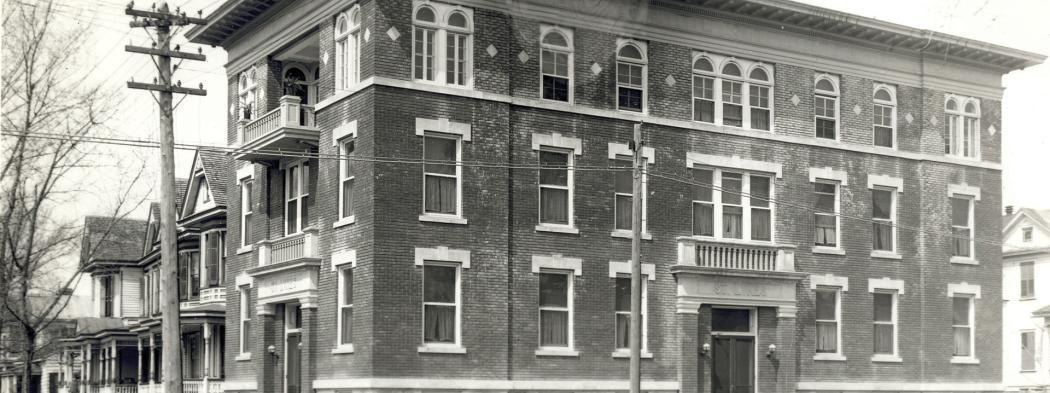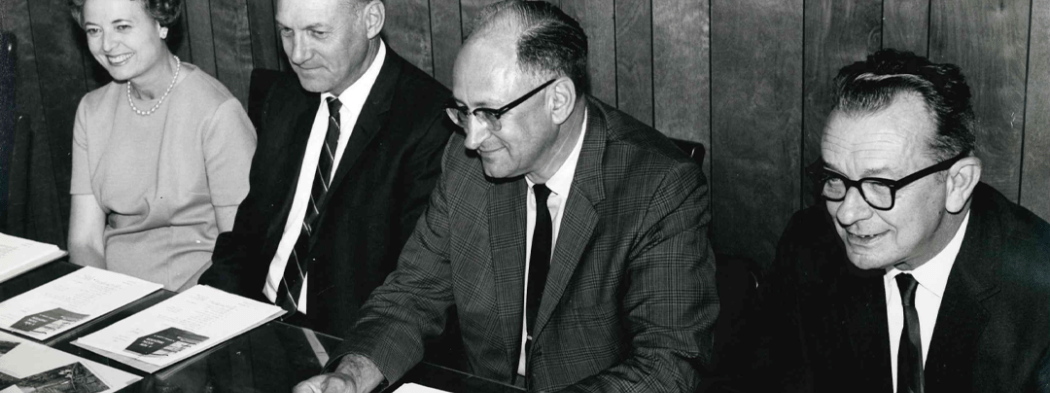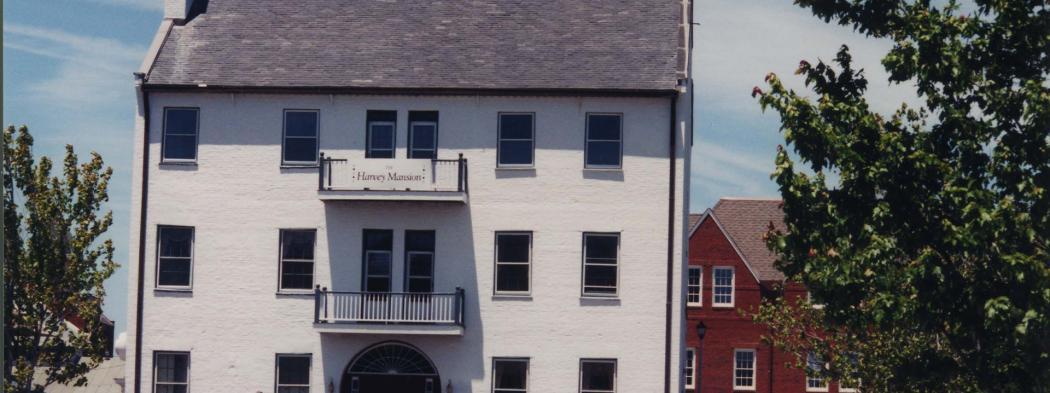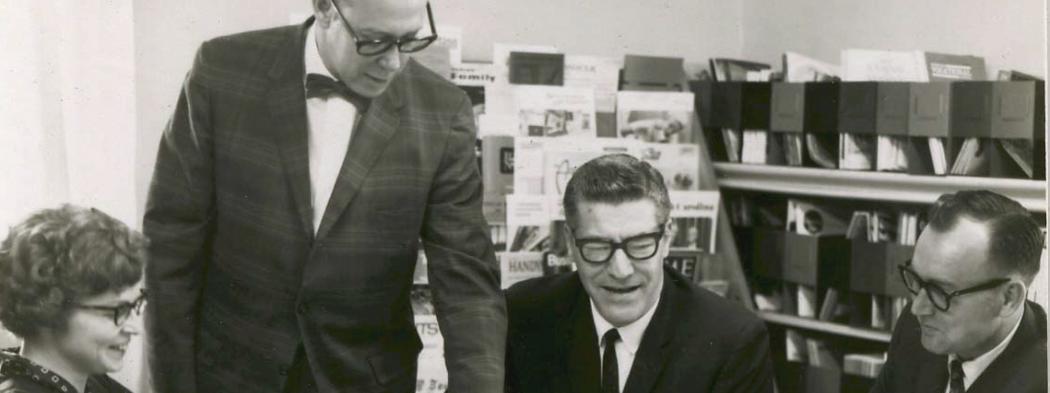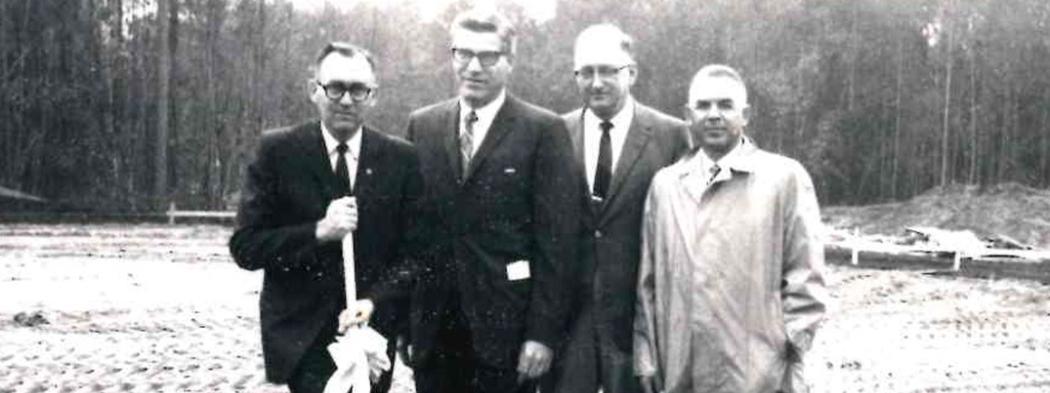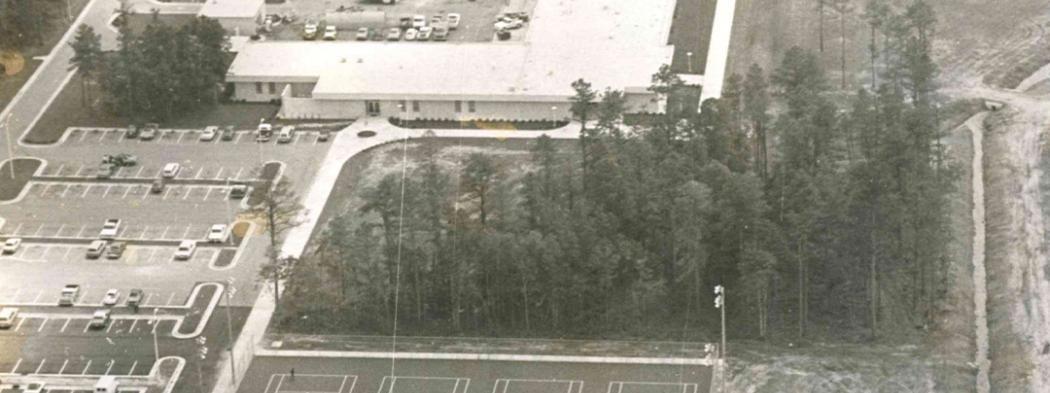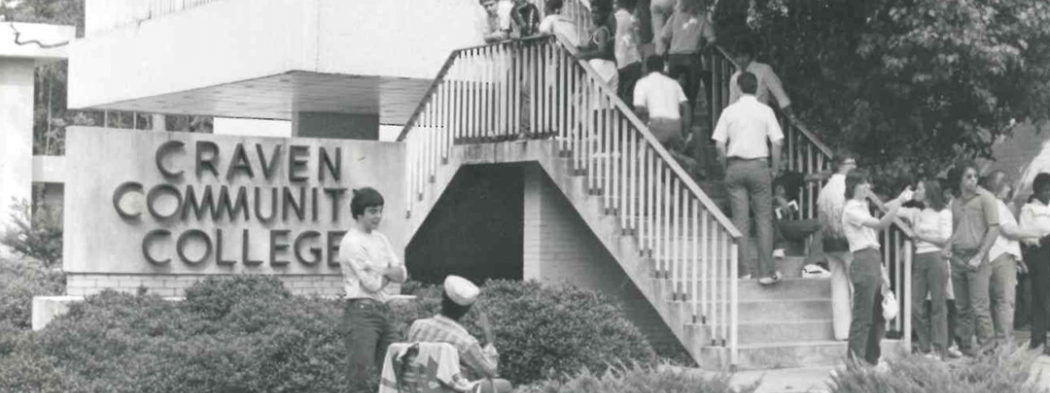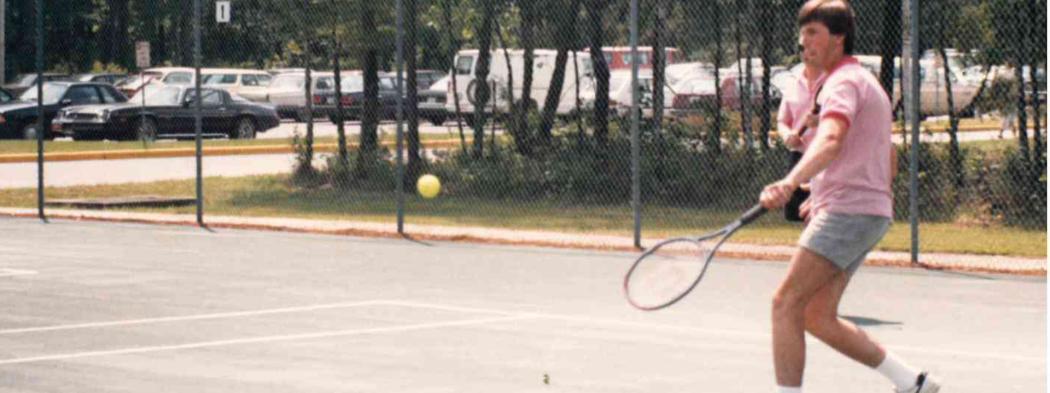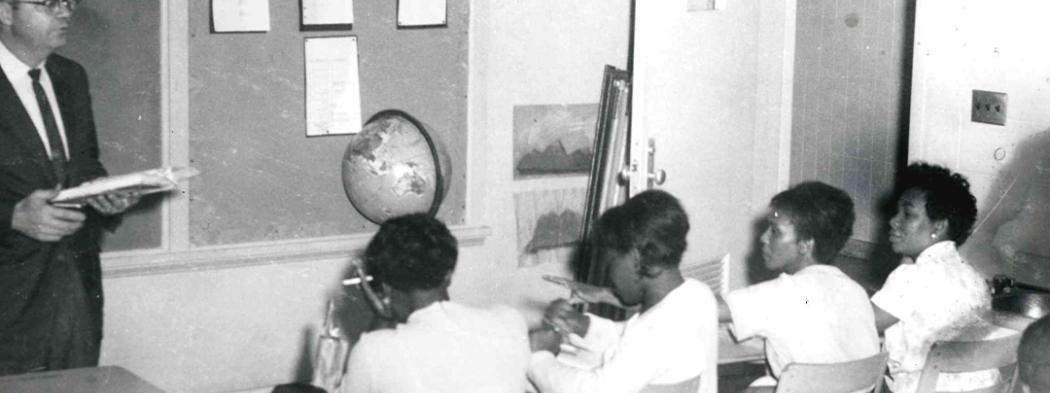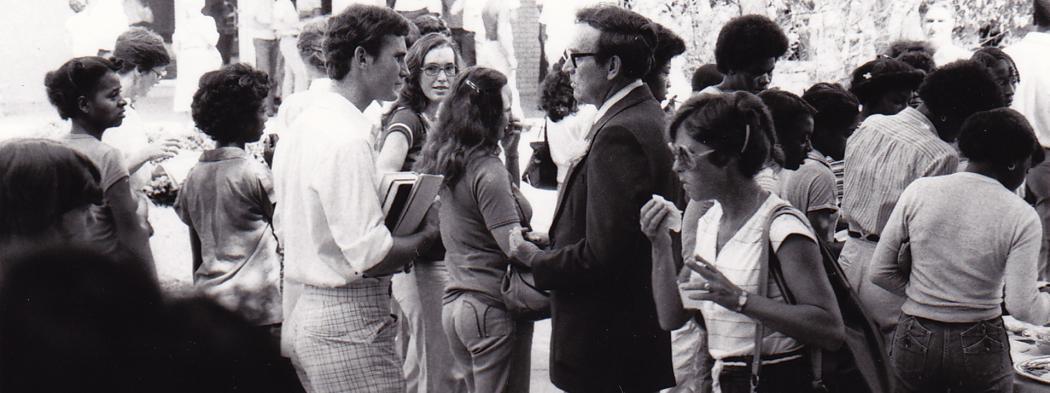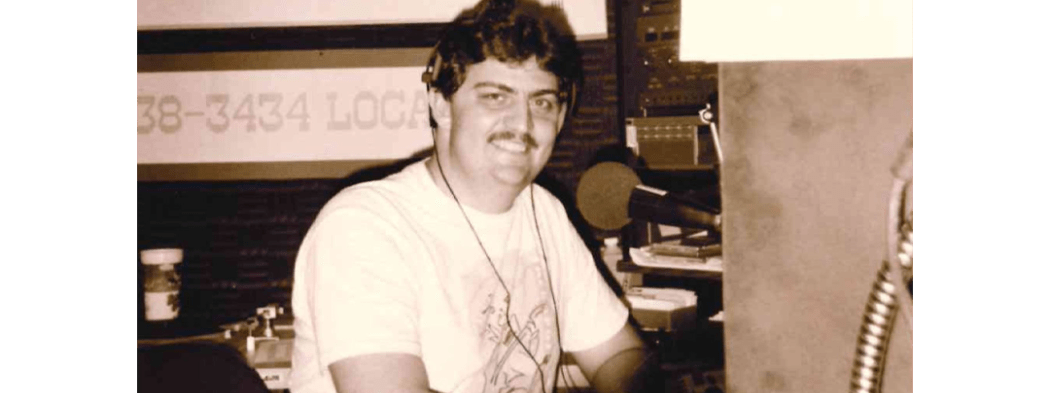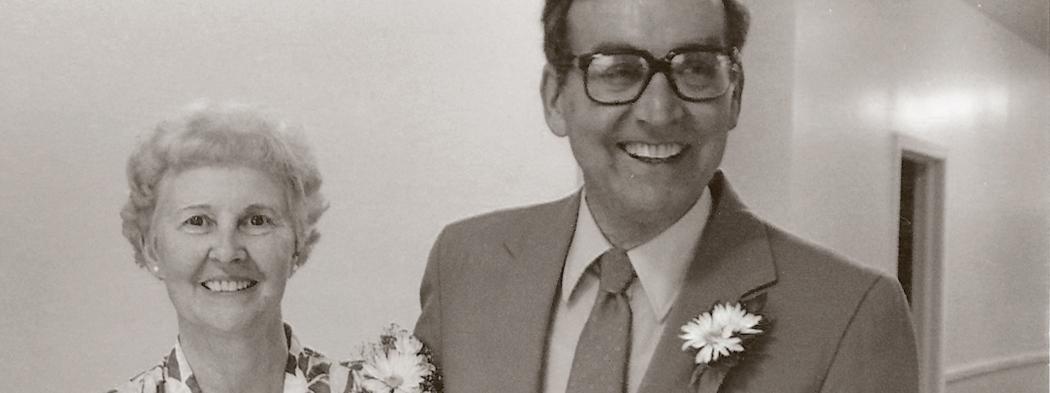Celebrating Craven's 60th Anniversary
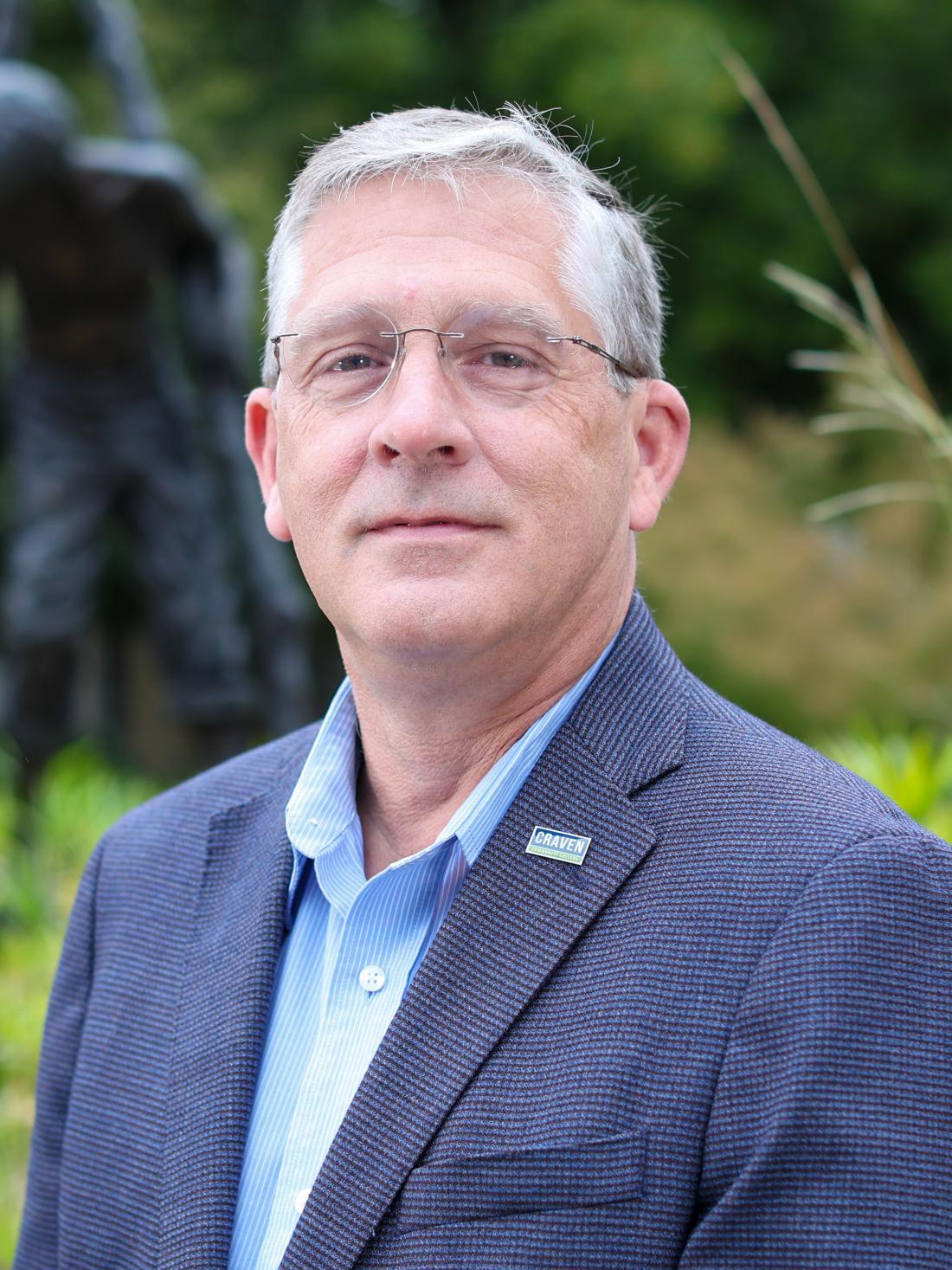
Craven Community College traces its beginning to the early 1960s when the Lenoir County Industrial Education Center—now Lenoir Community College in Kinston—began offering adult education courses in Craven County in association with Craven County Schools.
By 1963, Craven County Director of Vocational Education Thurman Brock was offering continuing education classes at public schools throughout Craven County through Lenoir, which is the “mother” of all the Eastern North Carolina Community Colleges. That same year “Craven’s” first nursing students began taking classes at the old St. Luke's Hospital in downtown New Bern located at the corner of Broad and George Street.
The NC General Assembly officially created the Craven County Industrial Education Unit on July 1, 1965, as an extension of LCC. The unit headquarters was moved to the Henderson Apartments in downtown New Bern and classes were held in what is now the Harvey Mansion Restaurant & Historic Inn.
Craven County Technical Institute became an official independent institution of the North Carolina Community College System on July 1, 1967. April 23, 1968, is Craven Community College Founders’ Day, commemorating the first official meeting of the Board of Trustees, with Lynn Kelso as Chairman.
Dr. Thurman Brock saw the College through its initial development and served as president from 1967 to 1989. Dr. Steve Redd followed from 1990 to 2001 and Dr. Scott Ralls served from 2002 to 2007, until he was named the North Carolina Community College System President. Dr. Catherine Chew served from 2008 to 2015 and was succeeded by me, Dr. Raymond Staats, when I joined the college in 2015.
In 1968, our enrollment was at 88 students—contrast that to spring of 2024, where we have over 2,600 students enrolled. In 1969, the budget was $339,000 and the current budget is $36 million. In 1968 there were six staff members and 57 faculty; today, we currently have 150 staff members and 316 faculty.
Craven Community College is committed to making higher education accessible to all. Throughout our history and into today, we consistently find ways to help our students fit a college education into their busy lifestyles filled with work, family, and financial commitments.
As we approach our 60th anniversary, I want to extend my heartfelt thanks for being an essential part of our journey. Together, we are making a significant impact on individuals' lives and strengthening our community.
Thank you,

Dr. Ray Staats
Craven CC President
Presidential Terms
Craven Community College's presidents have been at the forefront of the College's continued growth and innovation throughout the years. Since the first Board of Trustees meeting on April 23, 1968, also known as Founders Day, the College has welcomed five different presidents.
| Dr. Thurman E. Brock | April 23, 1968–December 31, 1989 |
| Dr. Lewis “Steve” Redd | June 15, 1990–December 31, 2001 |
| Dr. Robert Scott Ralls | August 1, 2002–April 6, 2008 |
| Dr. Catherine V. Chew | October 1, 2008–July 19, 2015 |
| Dr. Raymond W. Staats | July 20, 2015–Present |
Presidential Video Library
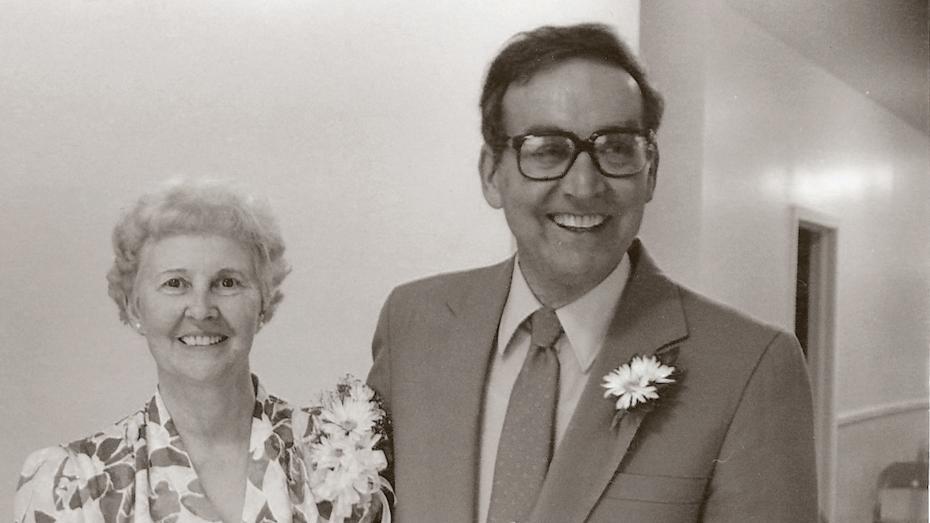
Dr. Thurman Brock
A video interview with the College's first president (April 23, 1968-Dec. 31, 1989) from the 50th celebration.

Dr. Lewis "Steve" Redd
A video interview with the College's second president (June 15, 1990-Dec. 31, 2001) in 2023.
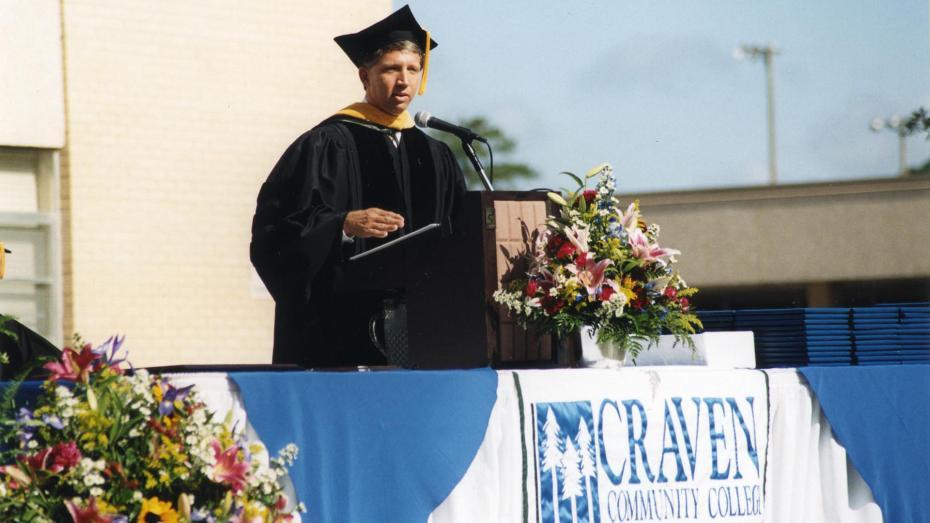
Dr. Scott Ralls
A video interview with the College's third president (August 1, 2002–April 6, 2008) in 2024.
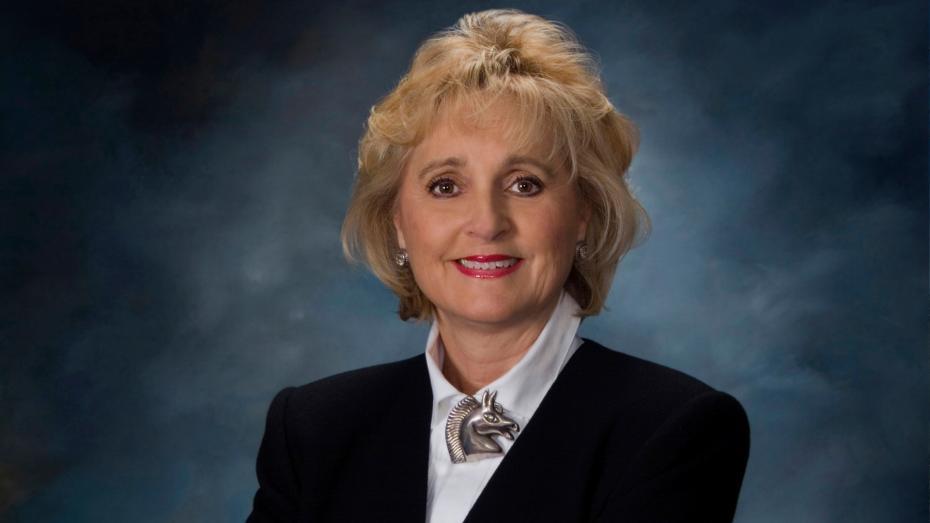
Dr. Catherine Chew
A video interview with the College's fourth president (Oct. 1, 2008-July 19, 2015) in early 2024.

Presidents Remember 50 Years
Presidents Brock, Redd, Ralls, and Chew share their stories about the college in a 50th anniversary video.
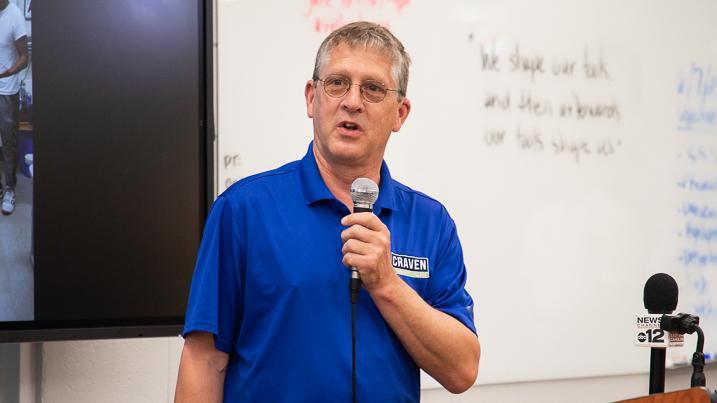
Dr. Ray Staats
A video interview with the College's fifth president (July 20, 2015-current) in 2025.
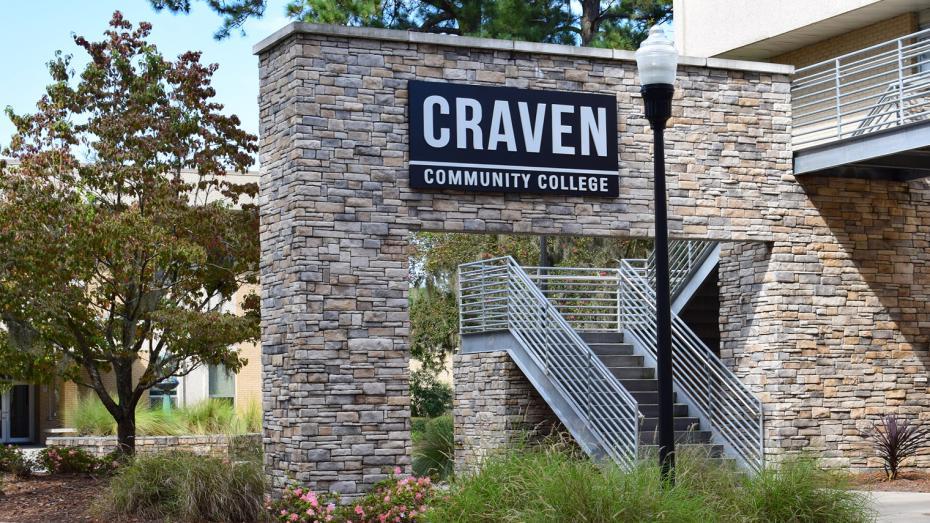
Presidents Remember 60 Years
Presidents Brock, Redd, Ralls, Chew, and Staats share their stories about the college in a 60th anniversary video.
Occupancy of the Harvey Mansion
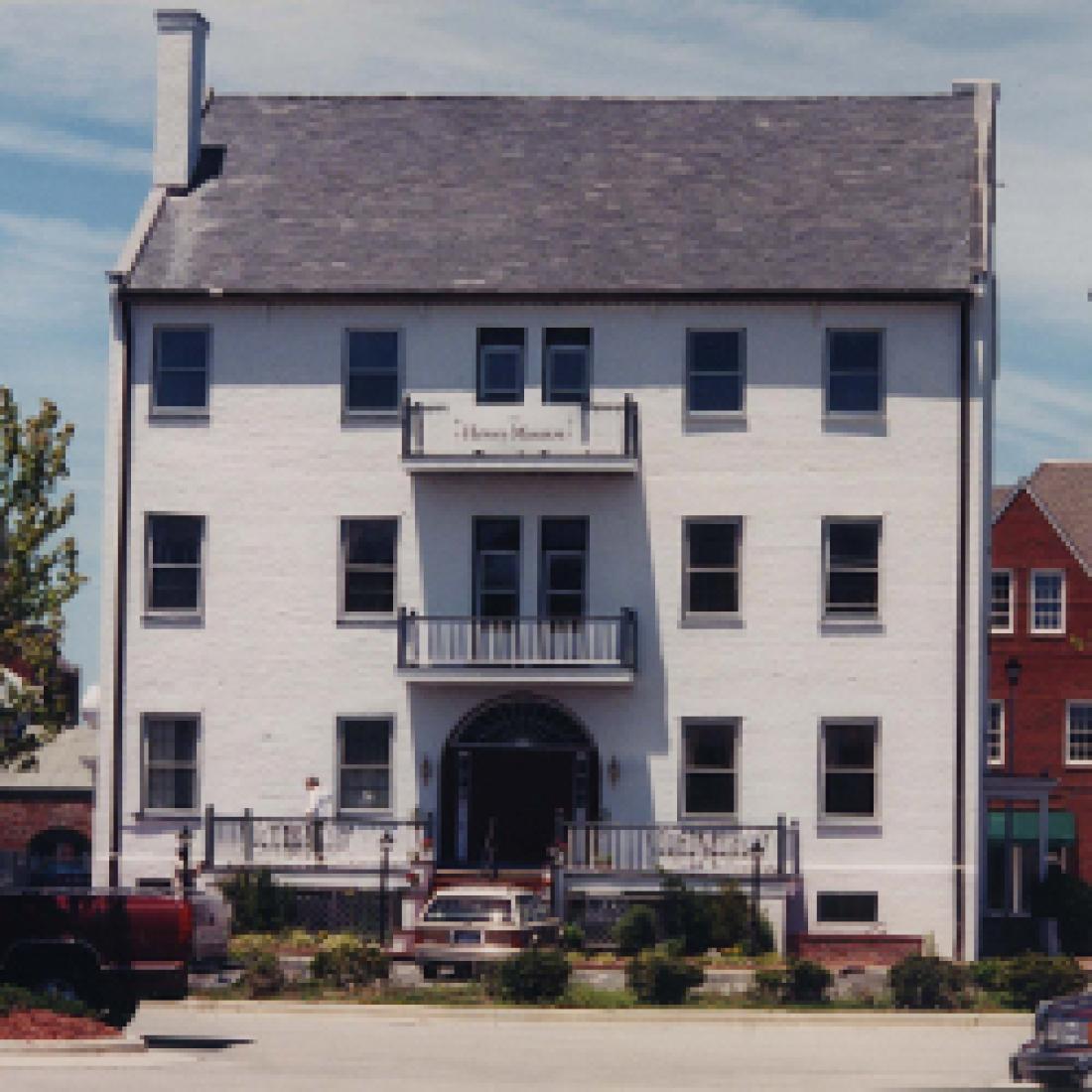
Dr. Lewis "Steve" Redd's history began at Craven CC in the fall of 1965 when he was hired part-time to assist with visitation and supervision of nighttime courses at New Bern High School. Dr. Redd was later hired full time in the spring of 1966 as Director of Extension, and would go on to serve as the College's second president (June 15, 1990–December 31, 2001). The College's early years showed a growing interest among the community and a need for larger space, which led to Craven finding a home at the Harvey Mansion from 1966-1972. Below is a brief history that Dr. Redd wrote about those early days, entitled "Occupancy of the Harvey Mansion By Craven Community College."
On July 1, 1965, the North Carolina General Assembly issued a charter creating the Craven Industrial Education Center, a unit of Lenoir County Community College. Upon issuance of the charter, an Advisory Board composed of local citizens was appointed. Their first duty was to employ a director for the center and to find appropriate space for operating. Under the existing state laws, each extension unit was controlled directly by the local county commissioners, the local school board, and the board of trustees of the sponsoring institution.
Prior to the issuance of the charter, a group of citizens, under the leadership of then Superintendent of Craven County Schools Robert L. Pugh, had initiated a local study to document the need for an adult vocational education center. Superintendent Pugh assigned that task to Thurman E. Brock, who was vocational director for the county schools. When the Advisory Board undertook the task of selecting a director, they unanimously agreed that no one was in a better position to lead this new organization than Thurman Brock, who had spent the previous year developing the study. Consequently, he was appointed as the first director.
Lenoir County Community College was already conducting a licensed practical nursing program in cooperation with Craven County Hospital, and supervision of the program was transferred from the Community College to the new Craven IEC in its first year of operation. In order to house both the administrative offices of the IEC and the nursing program, the advisory board, with the cooperation of Craven County, secured the third floor (the operating rooms) of what was St. Luke's Hospital at the comer of Broad and George streets.
Director Brock then set about employing the staff. He hired secretary /bookkeeper Kathleen Tyndall, and he, Mrs. Tyndall, and nursing teacher Maxine Cliatt moved into the third floor of the hospital building to begin operations on July 1, 1965.
During the previous year, Brock had also been setting up numerous adult education courses throughout the county. These courses were in the fields of typing, welding, adult basic education, and adult high school education. Most were conducted at night using public school facilities. During the fall of that year, I was employed on a part-time basis to help with the visitation and supervision of these nighttime courses. I was teaching industrial arts at New Bern High School then. My job for Director Brock was to deliver educational materials, collect teacher reports, and conduct testing for evening adult students. In the spring of 1966, I joined Director Brock on a full-time basis as Director of Extension, supervising an evolving adult education program throughout the county. It was certainly obvious to the Advisory Board as well as to Brock that, if the school was going to expand to fulltime, programs of a vocational educational nature for adults of Craven County, it would need more than three rooms.
Brock and the Advisory Board looked for larger quarters to house the growing curriculum. The long-range goal of the board was the creation of an independent technical institute to serve Craven County. Such an endeavor would mandate a permanent campus, but that was farther down the road. So, the search in 1966 was for larger temporary accommodations. About the time I joined the staff full-time, arrangements were made to rent the four-story Henderson House Apartments or Harvey Mansion at 221 Tryon Palace Drive, in addition to a two-story duplex located on the rear of the property.
Other arrangements were made for the new school to occupy the Leona Tolson Elementary School located in the Croatan vicinity on Highway 70 just west of the Croatan Presbyterian Church. On or about June 1, 1966, we moved what was then a very small organization into the facilities mentioned above.
In the Croatan school we located a machinist program, drafting program, physics lab and welding shop. On Tryon Palace Drive we located the already existing licensed practical nursing program on the third floor of the apartment building. The second floor was allocated for new courses in business administration and secretarial science, and the first floor became the first adult learning lab and the beginnings of our library.
Administrative offices moved into the two-story duplex in the backyard. Adapting the Henderson Apartments for our use required some renovation. Needless to say, the new IEC had little money to hire professionals, so most of the renovations were accomplished by the administrative staff using hammers and saws. Some students who were then enrolled in a short-term carpentry program helped. Prior to our taking occupancy, the Henderson House was divided into six apartments—two on each of the three floors—in addition to two apartments in the backyard duplex. Only two apartments were occupied, however, when the IEC concluded the lease agreement.
One of the first things to be done was cutting doorways on each floor to allow traffic to flow from one side of the building to the other. The next thing was to install heat; open-flame gas heaters were chosen for each classroom as the most economical solution. The job of painting the outside of the structure was left to professionals, but the staff agreed to paint the inside. The final task was the introduction of fluorescent lighting and numerous electrical receptacles for business machines, audiovisual projectors, and other educational equipment. The original kitchen for the Harvey Mansion was located on the ground floor or basement. This room with a partial concrete floor had a large functioning fireplace. We decided to make the room, approximately 15' x 15', our student lounge and brought in furniture acquired from the Salvation Army and vending machines for snacks and beverages.
The room on the opposite corner of the building was used for storage. Unfortunately, that room had a dirt floor and was always humid, so we had to be very careful what we put in there.
In the fall of 1966, the Craven IEC opened to the citizens of Craven County with a much expanded curriculum. During the first year we had nearly 80 students attending the IEC with about 50 utilizing facilities on Tryon Palace Drive and 30 at Leona Tolson School.
In the early months of operation on Tryon Palace Drive, it seemed as though we had more space than we could ever use. We certainly had more than we could furnish at that time, but as the years went on the enrollment increased, and it was not very long before space at both locations was falling far short of that necessary for the numbers of students who were seeking admission.
Some two years after we occupied the Harvey Mansion we also leased a two-story frame dwelling next-door at 217 Tryon Palace Drive. Into that structure we moved the library and the learning lab. One room was set up as the office for all faculty, which by that time had grown to eight instructors. We then utilized the first floor of the Harvey Mansion (left vacant when the library and learning lab moved next door) for additional business classrooms and labs.
By this time the number of students and staff—both day and night—was putting a strain on quarters not designed for such intense use. We lived with constant problems of overloaded electrical circuits, inadequate plumbing, and insufficient heat and air conditioning. One Monday morning when we arrived, the thick old plaster ceiling in one classroom had broken loose and fallen to the floor. Fortunately, that room only housed desks and chairs, so damage to the furnishings was minimal. It took all day to clean the mess,but during the next two days staff members installed a new drywall ceiling and painted the room. Classes resumed Wednesday evening.
In the backyard duplex Director Brock had one office; our bookkeeper occupied another. I had an office, and our Dean of Students had one. The reception area was downstairs. Before we vacated these facilities, our staff had grown to the extent that on the last day I was sharing my office with four other people. It might not seem like such a hardship, but the room was only large enough for two desks, so we had to share a desk with one of us working on one side and one on the other. It was pretty much that way throughout the school.
Both the two-story administration building in the backyard and the dwelling house next door were demolished during the Central Waterfront Urban Renewal Project in the early 1970s.
Another problem which became paramount early on was parking. Eventually the IEC had the opportunity to rent property across the street when the Elijah Ellis House (1882) was torn down. Though it was totally unpaved and not even rocked, we were able to accommodate 25 automobiles in our first parking lot. Without marked spaces we often had to assist drivers in getting out of the crowded lot. As an educational facility ,the Harvey Mansion left much to be desired. However, it also offered a degree of permanency that allowed our institution not only to conduct its business but also to grow and gain stature in the eyes of the community.
By 1967 the General Assembly had granted a charter for an independent institution named Craven Technical Institute. The voters of Craven County showed their support by passing the required referendum in the latter part of 1967, and thus completed the last step in establishing a fully independent college for Craven County. At that point, a Board of Trustees was appointed which consisted of Chairman Lynn N. Kelso, Vice Chairman Albert Salem, Edwin J. Cella, Edward C. Howard, James B. Wiggins, Hiram Mayo, John R. Hill, Leah Ipock, Charles T. Denham, Dr. Charles T. Barker, James F. Gavin, and Evelyn Haire.
Included in the referendum was a half million dollar bond to purchase land for the permanent campus along with matching funds to construct the first two buildings. By 1969 the 100-acre campus on Racetrack Road (now Glenburnie Road) had been purchased from Weyerhaeuser; and contracts to build the first two buildings had been let to Trader Construction Company of New Bern. In 1971 Craven Technical Institute moved from Leona Tolson School and the Harvey Mansion to its new home. By that time the enrollment at the technical institute had grown to approximately 300 students.
During its initial two years at the new site enrollment exceeded 500 students. In the succeeding years one of the original two buildings underwent a major expansion and three additional buildings were erected. Today, the sixth facility is under construction on the campus. Enrollment in the college now includes 2,200 curriculum students and between 8,000 and 10,000 continuing education students.
The first official home of what is now Craven Community College has a long and interesting history which parallels that of our town. The short period of time that Craven Community College occupied the facilities amounts to but a fraction of the history of the Harvey Mansion. On the other hand, in the short history of Craven Community College, the building on Tryon Palace Drive known as the Harvey Mansion played a significant role in the history of our college. It was during these few years that the college took its place as a permanent educational institution, fulfilling a vital role for the citizens of our area in addition to assuming its natural position in a statewide system of 58 community colleges.
While the Mansion lacked some of the modem conveniences which we now take for granted, the years that I spent working in, nurturing, and patching those facilities will remain fond memories with me forever.
Did You Know? The History of Craven Community College

Dr. Thurman Brock was a part of Craven Community College's story from the very beginning. His first day on the job was Aug. 15, 1961 as the inaugural Director of Vocational Education for Craven County Schools. He went on to become the College's first president, serving April 23, 1968–December 31, 1989.
To help preserve his institutional knowledge from those early years, Dr. Brock wrote an 18-part history of the College in 1984-85 for the school newspaper, "The Panther."
If you have something you'd like to share about the College's history, we would love to hear about it! Please email any information and photos to marketing@cravencc.edu.
